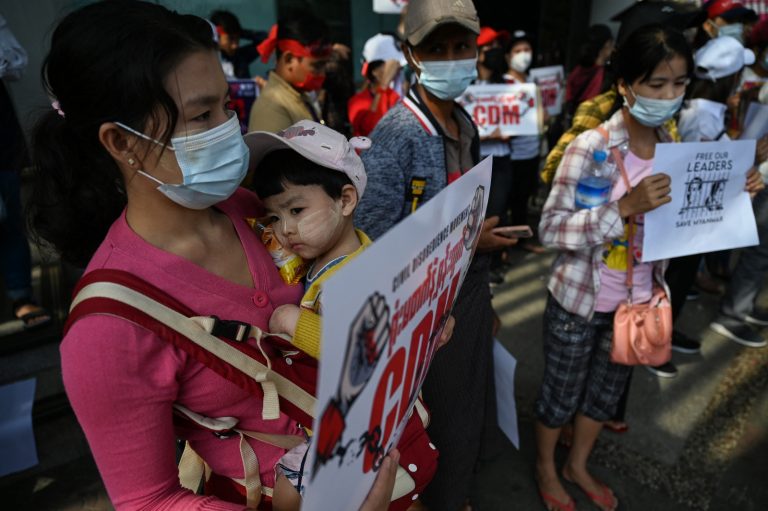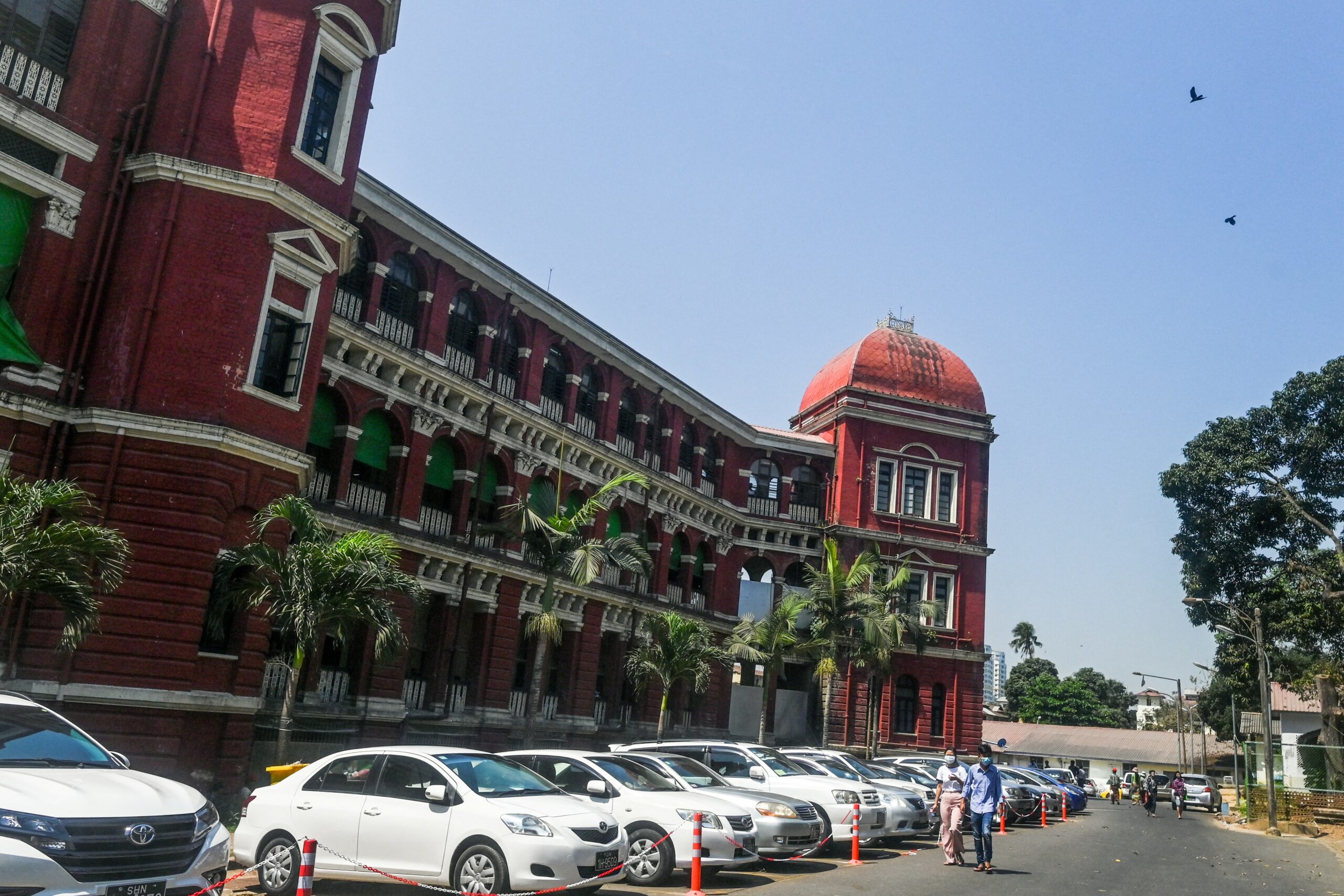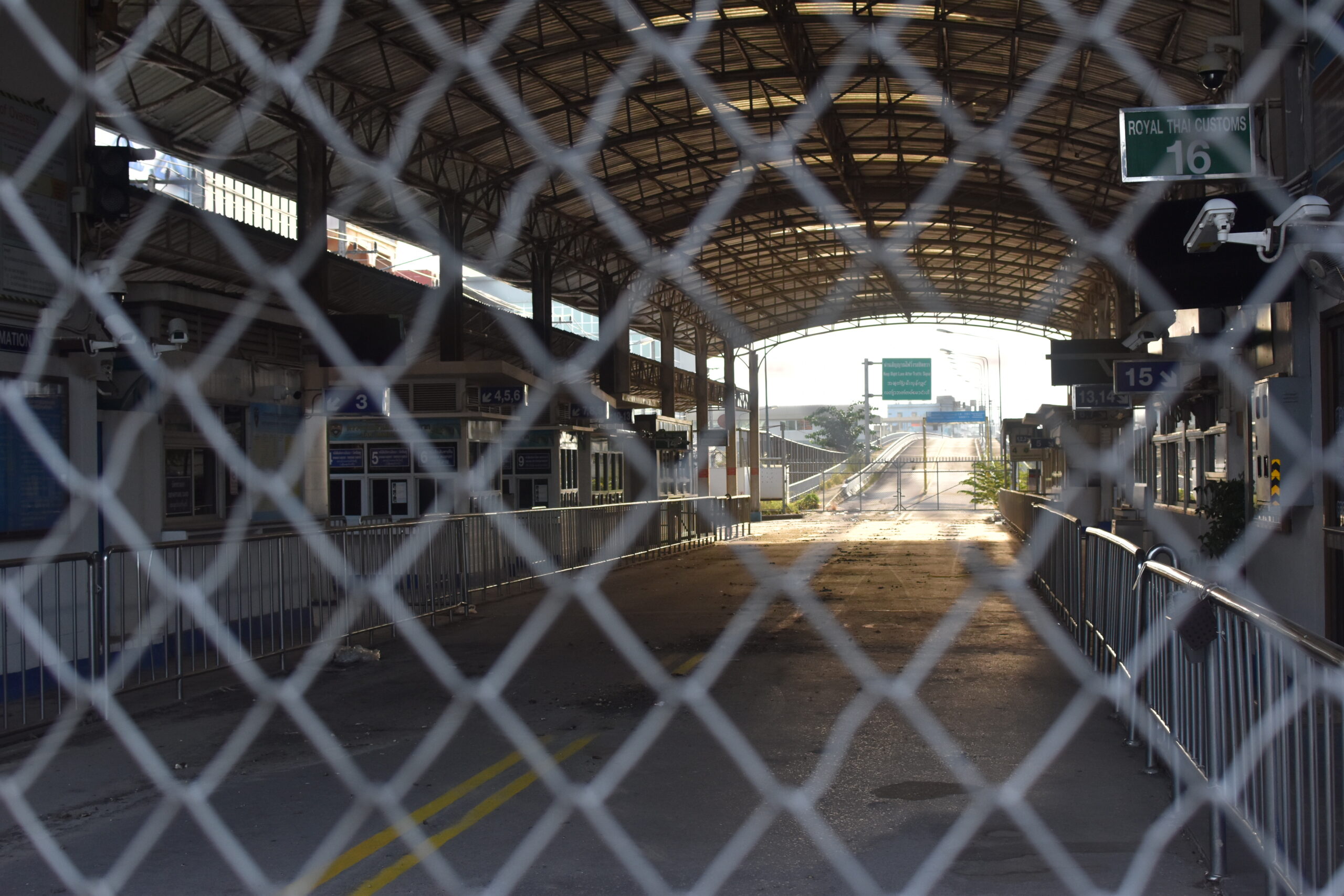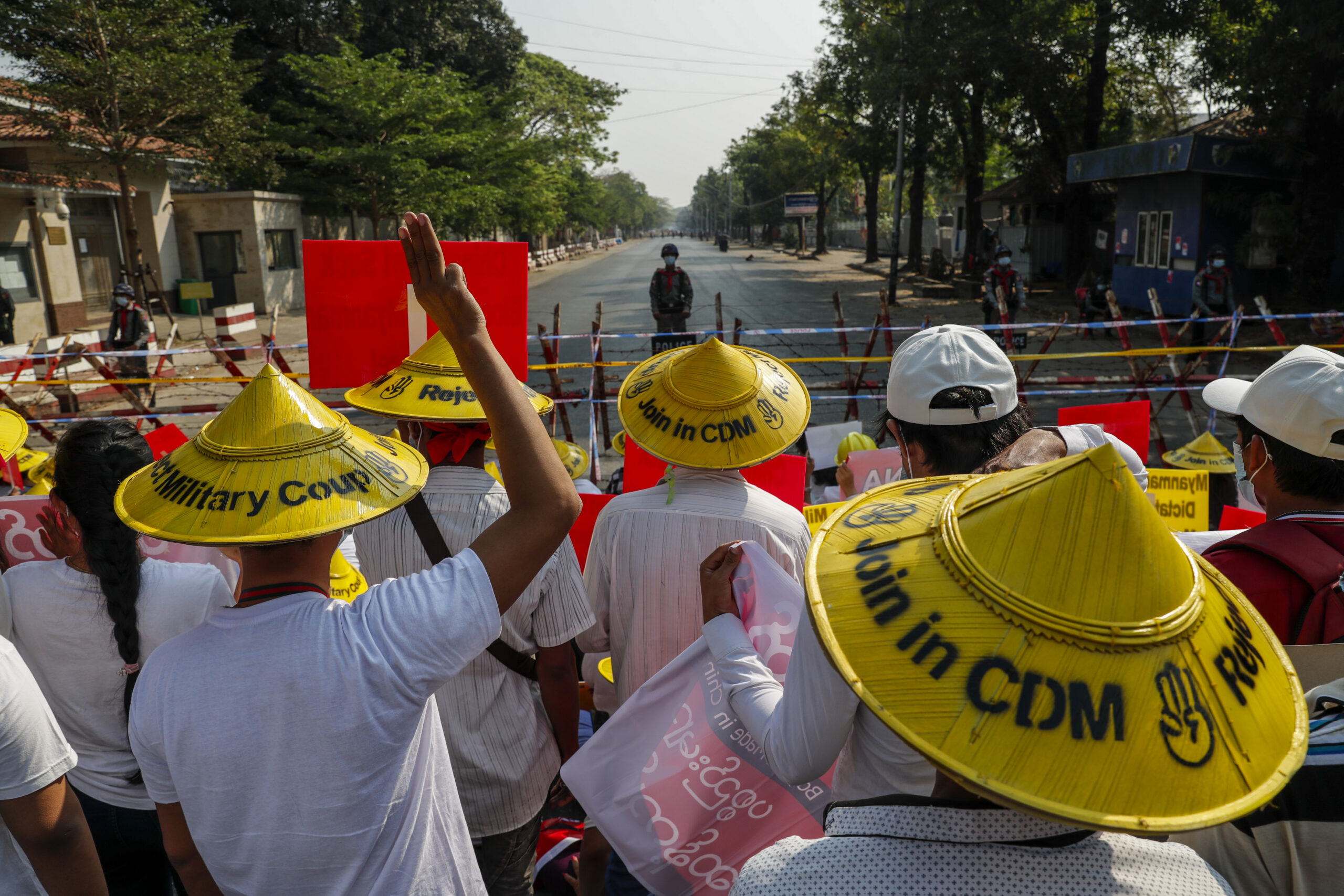By JARED DOWNING & KO KO AUNG | FRONTIER

A traditional medicine hospital in Bahan Township, Yangon. (Ann Wang / Frontier)
The neatly organised and labelled bottles and jars that line the shelves of Dr Thun Myint’s tiny clinic are similar to what you might see in most medical practices, except that they were concocted from formulae thousands of years old. The doctor, a grey-haired man with glasses and a stethoscope, started his traditional medicine practice in the 70s. He didn’t need a licence then.
Myanmar’s traditional remedies have been handed down from master to pupil for generations. The Ministry of Health has spent the last few decades trying to standardise them. The Department of Traditional Medicine, which is responsible for licensing practitioners, operates more than 20 traditional medicine hospitals throughout the country, including 100-bed facilities in Yangon and Mandalay, as well as about 240 public clinics. There are two government traditional pharmaceutical factories and a traditional medicine university in Mandalay. In 2013, the DTM distributed 26,000 emergency traditional medicine kits to rural areas.
Traditional indigenous medicine went into decline during British rule and did not begin to recover until the 1950s. The DTM was established in 1989 “with the aim to extend the health care services for both rural and urban areas,” said a government pamphlet.
Support more independent journalism like this. Sign up to be a Frontier member.
Dr Thun Myint also suspects an economic motive: Traditional remedies are usually much cheaper than Western medicine, which means they play a cost-effective complementary role in the state healthcare system.
Dr Thun Myint’s licence is more than a rubber stamp. He often hears of illegal traditional medicine clinics being shut down and the practitioners arrested. He acquired his licence in the 1990s: it must be renewed every three years but the process is becoming more difficult for those without a degree in traditional medicine. “There are only certain times when the government allows [doctors without degrees] to apply for a licence, and we don’t know when,” he said.

U Thun Myint, a Myanmar doctor specialising in traditional medicine. (Ann Wang / Frontier)
Dr Kyaw Thein Htay is Pro-rector of the University of Traditional Medicine in Mandalay, which has a five-year bachelor’s program that includes a year-long internship. For him, the growing emphasis on formal education is a step forward. “What is most important for Myanmar traditional medicine is research,” he said.
As an academic discipline, traditional medicine is a vast, ancient and often subjective mixture of traditions from throughout Asia. The university has organised its curriculum into categories such as the Desana system, rooted in Buddhist philosophy, and the Bethitzza system, which originated in Ayurvedic Hinduism.
It is subjective concerns that drive patients to consult Dr Thun Myint, who specialises in gall bladder and prostate ailments. He insists on making his pills, powders and balms himself. “I do it how I learned, how I always have,” he said. “The manufactured medicine is different.”
Subjective or not, raising ancient treatments to modern standards is crucial, says Robert Walsh, a biotechnology consultant in Yangon who has spent 12 years working with pharmaceutical companies in China, the standard-bearer for Eastern traditional medicine.
He mentioned the Pharmacopeia, a kind of industry-wide recipe book recognised by the World Health Organisation as the official Chinese pharmacopeia.
“They have a separate pharmacopeia that also covers each and every compound that goes into traditional Chinese medicine,” said Mr Walsh. “And each of those compounds comes with a set of tests that have to be performed, again, using well-known, standardised laboratory tests that you would use for any medicine,” he said.
Indeed, two compounds found in Chinese traditional medicine, the botanically-derived artemether and artesunate, are ingredients in the most common malaria medication used in Myanmar.
Mr Walsh’s point is not lost on Ko Han Win Aung, a member of the Youth Physician Organisation on Traditional Medicine, which helps preserve and advocate for the discipline. “Traditional medicine must be used systematically and scientifically,” Ko Han Win Aung said. “We must learn from Western doctors. We must combine tradition and modern techniques,” he said.
Research and development requires money and Pro-rector Dr Kyaw Thein Htay said the biggest challenge for his students is finding jobs in an industry that remains dwarfed by conventional medicine.
Mr Walsh says one explanation is that natural remedies are challenging to market.
Major pharmaceutical companies – “Big Pharma” as he calls them – have dabbled unsuccessfully in Asian traditional medicines. In one notorious case, international legal action by the Indian government in 2013 foiled an attempt by an American company to patent turmeric, a traditional anti-inflammatory medicine in India and elsewhere in Asia.
“The flip side of this is that you won’t get Big Pharma interested in any of these compounds because there might not be something that is patentable,” Mr Walsh said. “Big Pharma can’t take a compound and make it into a blockbuster.”
Despite marketing challenges, Dr Kyaw Thein Htay said more research is being conducted and traditional medicine as a discipline of study is attracting greater interest.
“Some even didn’t even know there was a university of Myanmar traditional medicine, and now they are very willing to join,” he said.
The university recently began offering a masters degree alongside its bachelor’s program. Alumni who cannot find jobs in the traditional medicine industry are opening successful independent practices.
That rite of passage happened a long time ago for Dr Thun Myint, but he has no doubt that the young graduates will attract patients of all ages, classes and backgrounds. Some patients want the option of trying traditional medicine as an alternative to conventional treatments; others have no options. Most of all, they use traditional medicine because they find it to be efficacious.
“When patients come back and tell me are healed, I feel so honoured,” said Dr Thun Myint. “I wouldn’t trade that for anything in the world.”






